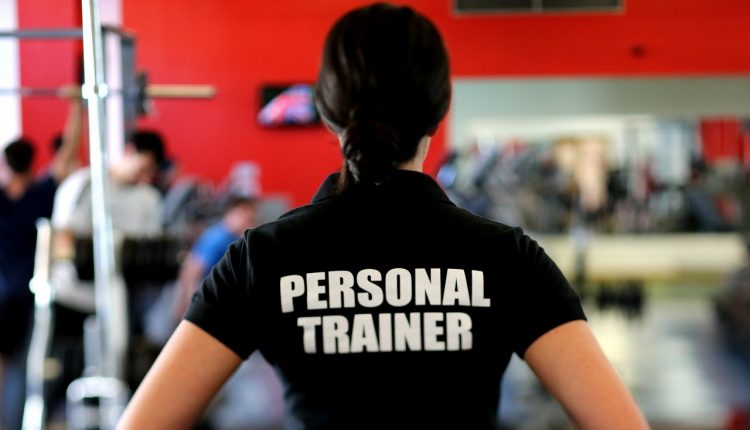A Comprehensive Guide on How to Get Certified to Be a Personal Trainer

The fitness industry has witnessed a surge in demand for qualified personal trainers who can guide individuals towards achieving their health and fitness goals. If you are passionate about exercise, health, and helping others transform their lives, becoming a certified personal trainer could be a fulfilling and rewarding career choice. In this extensive guide, we will navigate through the process of how to get certified as a personal trainer, covering various certification programs, study materials, exam preparation, and industry insights.
The Importance of Certification
Obtaining a certification as a personal trainer is more than just a credential; it signifies your commitment to professionalism, knowledge, and competency in the field of fitness. Certification equips you with the necessary skills to create effective workout programs, provide personalized training sessions, and offer guidance on proper nutrition and behavior change. Clients are more likely to trust and invest in a certified personal trainer, enhancing your career prospects and credibility within the industry.
Choosing the Right Certification Program
There are several reputable organizations that offer personal trainer certifications, each with its own curriculum, study materials, and exam requirements. Here are a few prominent options to consider:
ACE (American Council on Exercise)
NASM (National Academy of Sports Medicine)
ISSA (International Sports Sciences Association)
ACSM (American College of Sports Medicine)
NESTA (National Exercise & Sports Trainers Association)
Research each organization’s certification program, curriculum, and study materials to determine which aligns best with your learning style and career goals. Look for accreditation from reputable bodies, as this ensures the program’s quality and relevance within the industry.
Education and Prerequisites
While specific prerequisites may vary depending on the certification program, most require candidates to have a high school diploma or equivalent. Some programs may also recommend a basic understanding of exercise science and human anatomy.
Study and Exam Preparation
Becoming a certified personal trainer requires diligent study and preparation. Once you’ve chosen a certification program, enroll in the designated study program or course. These programs often provide comprehensive study materials, including textbooks, online resources, practice exams, and study guides. Allocate sufficient time for self-study, reviewing course materials, and practicing exam-style questions.
Utilize resources such as study groups, online forums, and peer discussions to enhance your understanding of the material. Many certification programs also offer workshops, webinars, and in-person seminars to provide additional support and hands-on learning opportunities.
Exam Readiness
The certification exam is a critical component of the process. It evaluates your knowledge, understanding, and application of fitness principles and training techniques. Create a structured study schedule, focusing on key topics such as exercise physiology, program design, nutrition, and client assessment.
Consider utilizing a “secret cheat sheet” where you jot down essential concepts, formulas, and mnemonic devices to aid in last-minute revision. This cheat sheet can serve as a quick reference during the final exam preparation.
Industry Insights and Practical Experience
Gaining practical experience is invaluable for honing your skills as a personal trainer. Many certification programs require a specified number of practice hours, during which you work with real clients under the guidance of experienced trainers. Seek opportunities to work or intern at fitness clubs, gyms, or wellness centers to gain hands-on experience and exposure to different training methodologies.
CPR and AED Certification
In addition to fitness knowledge, safety is paramount in personal training. Many certification programs require candidates to hold valid CPR (Cardiopulmonary Resuscitation) and AED (Automated External Defibrillator) certifications. These skills ensure that you are equipped to respond to emergencies and provide immediate assistance when needed.
Final Exam and Certification
As the final exam date approaches, focus on consolidating your knowledge and refining your test-taking skills. Review your study materials, practice sample questions, and take full-length practice exams to simulate the actual testing environment. On the day of the exam, stay calm, manage your time effectively, and trust in your preparation.
Upon successfully passing the certification exam, you will receive your personal trainer certification, which demonstrates your expertise and credentials within the fitness industry. This achievement opens the door to a range of career opportunities, including employment at fitness clubs, wellness centers, or the option to be self-employed as an independent personal trainer.
Conclusion
Becoming a certified personal trainer is a transformative journey that requires dedication, commitment, and a genuine passion for health and fitness. By choosing the right certification program, diligently studying the materials, and preparing for the exam, you can embark on a fulfilling career that positively impacts the lives of your clients.
Remember that the process of becoming a certified personal trainer is not just about passing an exam; it’s about acquiring the knowledge, skills, and practical experience needed to excel in a dynamic and evolving industry. With the right education, determination, and ongoing professional development, you can carve out a successful and rewarding path as a certified personal trainer in the thriving realm of health and fitness.


Comments are closed.